THE IMPORTANCE OF SALINITY ACLIMATIZATION OF MULLET FRY.
By Magdy A. Saleh
(GAFRD)*
* GAFRD, 4, El-Tayaran st, Nasr City, Cairo, Egypt.
Abstract: The effect of aclimatization on reducing post-transport fry mortality was studied during the fry transport operation to Wadi El-Rayan lakes. The results of the study showed that great losses occur in mullet fry especially during the first weak after transplantation if the aclimatization to low salinity was not conducted. Low salinity aclimatization, if carried out correctly, can gratly reduce the overall losses in transplanted fry. The experiment was done under normal field working conditions and an applicable aclimatization system for extensive fry transport was established. A follow up study will be carried out this season to establish a more solid system.
INTRODUCTION
Mullet species are of the most important cultured fish in Egypt. Trials of transplanting mullet, either to fish farms or to inland lakes, may go back to the late 20s which may put mullet as a pioneer aquaculture fish in Egypt. Collection and transport of mullet species fry on a commercial scale was known and applied since more than 50 years to lake Quaroun to substitute the declining nile fish biomass in this lake. Thanks for the work of the pioneers in this field, some Egyptian expertise had attained extensive experience and skills in the field of handling mullet fry on a large scale level.
Most, if not all, of fry were collected from a single fry collection station at El-Max near Alexandria until the late 70s.
With the great expansion of aquaculture in Egypt during the last decade (not less than 100k feddan of registered fish farms) the demand for mullet fry had increased greatly. Mullet fry are now collected from 10 official stations with a recorded catch of 150 mil. fry/year. The expansion in aquaculture and fry collection was not accompanied with an equal development in the knowledge on fry handling and mullet farming. As a result, great losses in fry were observed. Of the main reasons of this losses is the lack of knowledge on the biology of mullet among most of fish farmers, on top of this, is the salinity tolerance by mullet fry. Most of the studies conducted on this topic, either in Egypt of other countries were mainly carried out on a small scale and limited sample size under laboratory conditions and some times by stimulating field condition.
In this study I tried to get a realistic understanding and approach to take this problem through the application of this experiment during the large scale mullet fry El-Fayoum lakes. The results of this study shows the importance of applying low salinity aclimatization for mullet fry to reduce the mortality and designing an applicable aclimatization system for large scale mullet fry transport.
MATERIAL AND METHODS:
Fish : Mullet species fry collected by a fine mesh seine net at Dammytta fry collection station. Experimental system: (1m3 each) habbas made of mosquito net material fixed in nursing pond of the second lake Wadi-El-Rayan with its bottom intermingled with the pond bottom. ICD-WTW brande conductivity meter and a LCD-WTW brand dissolved oxygen-temperature probes.
A DAF, 1600 fry transport truck with built-on 6, 1m3 each double-walled insulated glass-fibre fry tanks supplied with air by a diesel runned air compressor with oil and traps.
EXPERIMENT PROCEDURE:
Liza ramada fry (18 mm + 1.6,0.04 gr) were transported in sea water (37.4 ppt total disolved solids; TDS) in a density of 10k/m3. The truck trip from El-Gerby, Dammytta fry collection station took. 7h and fry were kept in the transport water (oxygen saturated, pH 8.5, temperature 18 ° C and 0.12 ppm total ammonia nitrogen) for three hours with the tank led open and aeration on where temperature equalization with pond water occurs.
Fry were identified after Yashouv & Berner, 1970 and exotic fish fry were excluded.
Nursing pond water (2,6 ppt tds, pH 8.4 and 17.8°C temp.) was pumped into fry tank and TDS was observed by conductivity meter*. The concentration of salt was reduced by 5ppt each/2h. After each 5ppt reduction in TDS, 200 fry (in two patches each of 100 fry) were scooped out by a hand net and placed in two habbas. Fry were kept under observation for days, and mortality was counted each 12 hours.
* TDS was calculated by multiplying conductivity by a factor 0.684
To study the tolerance of L. ramada fry to sudden changes of salinity, a synchronized experiment was conducted L. ramada fry were brought to Wadi El-Rayan lake in two DAF trucks, each with 6 built on fry transport tanks. The experiment fry stock was transported in a single tank in a stocking density of 15k/m3, one tank full of sea water and the other 10 tanks were loaded with then normal fry transport rate. After unloading the trucks, tanks were washed clean and filled with sea water as follows; 1 % × 2,5 % × 2,22 % and 38 % × 2. Pond water was added to give a final TDS of 2.95, 4.34, 6.43, 10 and 15.8 ppt respectively. Two tanks were left full with 100 % sea water. Fry were distributed in 1k patches/tank. Fry were kept under observation and mortality was recorded for 24 hours and compared with those kept in 100 % sea water.
RESULTS AND DISCUSSION:
Aclimatization system examination: Fry which were transfered directly to pond water showed a frenzic reactions showed in fast aimless movements; vertical swimming to the bottom and the surface. After few minutes some animals started to show ill swimming and hyperventilation and increased coughing rate. During the second hour, fry seems as if it started to restore normal reactions, movements became slower but tands to rest near the bottom. Loss of control on buoyancy commences after the third hour where they start to float of sink unvoluntairly with side swimming or swimming with the long axis directed vertically. first mortality was recorded after 2.5 h, then mortality started to increase gradually. Hypermilanosis was observed in all fry just before death especially on the dorsal area.
The same reaction was also observed in fry transfered to pond water from 30,25 and 20 ppt TDS, on the other band, fry showed a moderate reaction when transfered from 15 ppt to pond water, still an overall high mortality was observed. Mild reaction can be observed on transfering the fry from 10 ppt to pond water but the final over all mortality was found tolerable if compared with the other mentioned concentrations. Fry transfered from 5 ppt to the pond water showed normal reaction and started to feed after a very short period. Research mortality during the experiment and the final survival are shown in table 1.
Table 1 : Mortality of fry for each TDS
| Mort/TDS | 100 | 30 | 25 | 20 | 15 | 10 | 5 | ||||||||||||||
| Time h | a | b | c | a | b | c | a | b | c | a | b | c | a | b | c | a | b | c | a | b | c |
| 12 | 87 | 85 | 86.0 | 86 | 85 | 85.5 | 84 | 83 | 83.5 | 72 | 68 | 70.0 | 41 | 39 | 40.0 | 18 | 22 | 20.0 | 8 | 7 | 7.5 |
| 24 | 91 | 90 | 90.5 | 88 | 89 | 88.5 | 85 | 86 | 85.5 | 78 | 74 | 76.0 | 41 | 40 | 40.5 | 29 | 30 | 29.5 | 9 | 8 | 8.5 |
| 48 | 93 | 91 | 92.0 | 90 | 90 | 90.0 | 85 | 86 | 85.5 | 79 | 76 | 77.5 | 48 | 46 | 74.0 | 31 | 30 | 30.0 | 9 | 8 | 8.5 |
| 72 | 94 | 95 | 94.5 | 93 | 92 | 92.5 | 86 | 86 | 86.0 | 79 | 77 | 78.0 | 49 | 48 | 48.5 | 34 | 33 | 33.5 | 9 | 9 | 9.0 |
| 96 | 96 | 95 | 95.5 | 95 | 95 | 95.0 | 86 | 86 | 86.0 | 79 | 78 | 78.5 | 51 | 49 | 50.0 | 34 | 34 | 34.0 | 9 | 9 | 9.0 |
| 120 | 96 | 96 | 96.0 | 95 | 97 | 96.0 | 87 | 86 | 86.5 | 80 | 78 | 79.0 | 51 | 49 | 50.5 | 34 | 35 | 34.5 | 10 | 9 | 9.5 |
| 144 | 97 | 96 | 96.5 | 96 | 97 | 96.5 | 88 | 87 | 87.5 | 80 | 79 | 79.5 | 51 | 51 | 50.5 | 34 | 35 | 34.5 | 10 | 11 | 10.5 |
| 168 | 97 | 96 | 96.5 | 97 | 98 | 97.5 | 88 | 87 | 87.5 | 80 | 79 | 79.5 | 51 | 51 | 51.0 | 34 | 35 | 34.5 | 10 | 11 | 10.5 |
| Viab.% | 3.5 | 2.5 | 12.5 | 20.5 | 149.0 | 65.5 | 89.5 |
Tolerance of fry to sudden salinity changes: Reflexes observed in this experiment was very similar to those shown by fry in the previous experiment. The sequence of mortality was somewhat different in this experiment, where greater percentage of mortality was observed after shorter exposure time. Table (2) shows the mortality/time for each TDS used in the experiment.
Table 2 : mortality time for each TDS
| Mort/TDS | 37.5 | 15.8 | 10.0 | 6.43 | 4.34 | 2.95 | ||||||||||||
| Time h | a | b | c | a | b | c | a | b | c | a | b | c | a | b | c | a | b | c |
| 3 | 0.0 | 0.0 | 0.0 | 4.0 | 1.0 | 2.5 | 18.0 | 22.0 | 20.0 | 24.0 | 21.0 | 22.5 | 64.0 | 65.0 | 64.5 | 78.0 | 80.0 | 79.0 |
| 6 | 0.0 | 0.0 | 0.0 | 4.0 | 2.0 | 3.0 | 25.0 | 30.0 | 27.5 | 38.0 | 36.0 | 37.0 | 72.0 | 74.0 | 73.0 | 84.0 | 87.0 | 85.5 |
| 12 | 0.3 | 0.2 | 0.3 | 5.3 | 2.8 | 4.1 | 40.6 | 31.2 | 39.4 | 64.0 | 59.2 | 61.6 | 81.4 | 80.2 | 80.8 | 95.8 | 99.2 | 97.5 |
| 24 | 0.5 | 0.3 | 0.4 | 7.9 | 7.1 | 6.0 | 43.6 | 45.4 | 44.5 | 82.2 | 84.8 | 83.5 | 89.0 | 91.2 | 90.1 | 100 | 100 | 100 |
| Surv | 99.6 | 94.0 | 55.0 | 16.5 | 9.9 | 0.0 |
The results of the study on the aclimatization system (table 1) shows that the greatest mortality occurs during the first24 h, then it starts it starts to decrease sharply. Mortality rises again during the 3rd day only for these groups transfered from 35 ppt and 30 ppt to the pond water. Table 1b, shows the relative mortality % during the experiment.
Table 1b : the relative mortality rate %
| Mort/TDS | 35.0 | 30.0 | 25.0 | 20.0 | 15.0 | 10.0 | 05.0 |
| Time h | 90.5 | 88.5 | 85.5 | 76.0 | 40.5 | 29.5 | 08.5 |
| 024 | 15.8 | 13.0 | 00.0 | 06.3 | 13.1 | 01.4 | 00.0 |
| 072 | 31.3 | 25.0 | 03.5 | 02.2 | 02.8 | 04.3 | 00.6 |
| 096 | 18.2 | 33.3 | 00.0 | 02.3 | 02.9 | 00.8 | 00.0 |
| 120 | 11.1 | 20.0 | 03.6 | 02.3 | 00.0 | 00.8 | 00.6 |
| 144 | 12.5 | 12.5 | 07.4 | 02.4 | 01.0 | 00.0 | 01.1 |
| 168 | 00.0 | 28.6 | 00.0 | 00.0 | 01.0 | 00.0 | 00.0 |
TDS = total dissolved solids in ppt
The overall mortality was greatest in the first two dilution groups, where only 3.5 and 2.5 survival were recorded, still very low survival was observed for the other following four groups. The only reasonable survival was that obtained at the last group after full acclimatization time.
It was observed from the results of the experiment on the effect of sudden change of salinity, that sudden transfer of fry from 37.5 ppt to 2.95 ppt leads to 100% mortality within 24h This mortality level had never been observed in the first experiment even after 7 days. It seems that a very short acclimatization time with very little reduction of salinity(2.4 ppt) can decrease the 24 hs mortality by 9.5% and the seven days mortality by 2.5–3.5%.
It was observed that very limited mortality (6%) was recorded after a one fold, abrupt reduction of salinity from 37.5 ppt to 15.8ppt, ie 42%. This shows that fry can tolerate a sudden reduction of TDS up to 50% of sea water, this can reduce the acclimatization time by at least 4 hours.
The results obtained here differs from those mentioned by Mires, (1970), where he found that L. ramada fry (20–24) resistant to sudden change in salinity, on the other hand, the results obtained in our study on tolerance of sudden salinity change are somewhat similar with those obtained by Mires et al, 1974 on Mugil cephalus and Chervinsky (1974) on L. aurata fry where no mortality accured when salinity was reduced from 100 % sea water to 4.6 ppt abruptly and 100% mortality when fish were transfered directly from sea water to fresh water. Also the results of this study agrees with results obtained by Chervinski: 1974 and Mires et al; 1974 on the importance of gradual reduction in salinity during acclimatization for reaching the highest survival.
CONCLUSION AND RECOMMENDATIONS :
- Liza ramada fry is very sensitive to sudden changes of salinity.
- Salinity can be reduced by 50 % of the original seawater salinity within very short time with very limited losses.
- An appropriate acclimatization regime can greatly reduce the great potential losses in mullet fry transplantation to fresh-water bodies and fish farms.
- It is recommended to install acclimatized facilities at each fry collection station to supply freshwater-acclimatized mullet fry to save the great losses occuring now as a result of neglecting acclimatization in most of fish farms.
REFERENCES :
CHERVINSKY, J. (1974). Liza aurata (Risso) (Pisces, Mugilidae) and its adaptability to various saline conditions. In proceeding of the IBP/PM International Symposium on the grey mullets and their culture, Haifa, June 1974.
MIRES, D. (1970). Preliminary observations on the effect of salinity and temperature of water changes of Mugil capito Bamidgeh 22(1), 19–24.
MIRES, D., Shak, Y. & Shilo, S. (1974). Further observations on the effect of salinity and temperature changes on Mugil capito and M. cephalus fry. Bamidgeh 26(4), 104–109.
STUDIES ON LEVELS OF STOCKING DENSITY FOR MULLET, RABBIT FISH AND PAGURUS FRY FOR FINGERLINGS PRODUCTION
by Magdy A. Saleh
EGYPT
Abstract : The effect of different stocking density of three fish species (Liza ramada; Risso, Siganus rivulatus and Pagurus haffara; C&V) fry fingerlings production was studied, Fish fry of the different species were stocked in 16 m2-bottom pens made of 2 mm mesh plastic netting materials in the nursing pond at lake Qaroun, El-Fayoum province, Fish fry (16–24 mm long) were stocked in five different stocking densities, 250/m2, 200/m2,150/m2,100/m2, and 50/m2, Feeding of fry was basically on green water and fermented-dried pigeon droppings.
Results of the study have shows that the best-highest stocking density was 150/m2 for mullet, 50/m2 for both rabbit fish and pagrus. Further studies are requires for studying the performance of fry of these species in mixed nursing at different stocking rates.
INTRODUCTION
Marine fish were introduced to lake Quaroun, an agriculture waste water recipient at EL-Fayoum province, since the early 20s (Faouzi, 1936). Mullet species were the first marine fishes introduced there, and on the contrary to what was published before (El-Zarka, 1968), no concrete evidence on natural propagation of any of the transplanted species was observed of found. Consequently, mullet fry must be transplanted regularly to the lake to maintain the local stock.
The operation of mullet fry transplantation to lake Qaroun, although conducted on a commercial scale since the early 30s, no solid informations are available on the suitable stocking density of fry during nursing. Mullet fry use to be stocked directly to the lake or to near shore pens and enclosures. This system was associated with great losses of fry (El-Zarka and Kamel, 1967) and a true figure of released fingerlings cannot be obtained.
An experimental nursing pond 32km2) was constructed lake Quaroun in the winter of 1988. The mullet fry requirement of lake Quaroun for 1988 season was calculated to be 11.5 mil, 2.5 mil, were stocked in two enclosures at Abu-Nemma and Shak-shouk, and 9 mil were stocked in the nursing pond.
Trials were conducted before to transplant other marine species (gilthead seabream-Sparus aurata; L-and the European seabass-Morone labrax; L) but the shortage of fry supply of those species seems to be the main obstacle that hindered the potentiality of these species as a part of the commercial catch of the lake.
Studying the availability of different natural food components, it was found that there is a great potential for introducing other marine species in the lake. A review of the quantitative and qualitative fry catch from 12 different fry collection stations on the Mediterranean, gulf of Suez and the bitter lakes, revealed that, a sufficient supply of rabbit fish and hafara fry can be obtained for stocking the lake in addition to mullet. Taking into consideration that the performance of any fish species in a new environment and production system should be studied soundly, especially if the information on the cultue biology of such species is still not completely studied, only 300k fry of rabbit fish and 150k fry of hafara were decided.
MATERIAL AND METHODS
Fishes : Liza ramada fry collected from El-Gerby fry collection. Siganus and Pagurus fry collected from Shandora collection station on the bitter lakes near Suez.
Two DAF, 1600 fry transport trucks, each with 6 built on double-walled insulated, 1m3 glass-fibre tanks supplied with air with a diesel runned compressor with dust and oil traps. 15, 16m2 each, bottom pens of 2mm mesh plastic netting. A sartorius, electronic top balance with DCD screen. A standard micro-fish measuring scale.
Two earthern ponds each of 16k m2 supplied by a water flow of 648m3day and a working water level of 80–95 cm.
Pens were fixed in the nursing ponds by four corner poles/ pens, the bottom nets were fixed by intertangling it with the bottom soil and bags filled earth along the sides. An equal depth of water with pond water was kept and a free board of 35 cm above water surface.
Fry were transported with the fry transport truck in a stocking density of 20k and 25k fry/m3for mullet and the other two species respectively.
Random samples of fry were collected and 500 of each species were weight and measured. Fry were stocked in pens at five different stocking rates, 250,200, 150, 100 and 50 fry/m2.
Soil samples were taken, dried, extracted and analysed according to the standard techniques and the fertilizer requirement (in terms of mg/l available Nitrogen, Phosphorus and other minor nutrients) was calculated, Ponds were plowed and traditional old cattle manure(cow dung mixed with stall dust and kept in heaps for fermentation for more than 60 days) and pilled in small heaps fro fermentation for more than 60 days) and pilled in small heaps in the ponds.
Two cement glazed brick tanks, 16m2 each were constructed on the pond dyke near the pumps. Tanks were designed a s in fig.1 mainly for pigeon dropping fementation and the production of nutrients and plankton enriched water, Fermented pigeon dropping were sun dried and supplied to the nursing ponds as food and fertilizer.
A weekly samples of 100 fry from each pen were taken, weighed in water-filled plastic bags of known weight and the mean weight was calculated. A sub-sample of 10 fry from each weekly sample were taken, length (TL) was measured and discarded.
RESULTS AND DISCUSSION
Liza ramada fry used in this study were 19.45mm + 1.16 having an average weight of 0.64 gr + 0.08.
The experiment was started Feb. 15 th. and finished June 1 st.; 10 weeks.
Table 1 and fig 2 shows the increase in length during the experiment time for the different used
stocking density.
| Density | T | 1 | 2 | 3 | 4 | 5 | 6 | 7 | 8 | 9 | 10 |
| 1 | 19.5 | 22.6 | 26.5 | 35.0 | 47.4 | 65.0 | 80.2 | 89.8 | 95.4 | 101.9 | |
| 2 | 19.5 | 22.1 | 26.0 | 30.7 | 40.8 | 56.0 | 70.1 | 79.9 | 85.1 | 87.4 | |
| 3 | 19.5 | 21.7 | 25.2 | 30.6 | 37.6 | 51.1 | 63.2 | 66.9 | 71.0 | 73.4 | |
| 4 | 19.5 | 21.5 | 25.1 | 29.4 | 36.7 | 44.6 | 52.5 | 59.8 | 62.4 | 67.1 | |
| 5 | 19.5 | 20.5 | 23.0 | 25.5 | 30.5 | 37.1 | 42.4 | 45.1 | 47.5 | 50.6 |
Table 1; increase in length during the 10 weeks experiment time at differ-stocking densities. D 1–5 = different used densities, T = time
Table 2 and fig, 3 shows the increase in weight during the experiment time, weight increment is also shown for each density.
At the end of the experiment, fry were gathered, counted and surivival was calculated for each stocking density.
It was found that mortality, on the contrary to what was expected, is not consitent with the stocking density. Survival % is shown with each increment for each stocking density.
| Density | T | 1 | 3 | 5 | 7 | 9 | 10 | 11 | 12 | 13 | 14 |
| 1 | 0.64 | 0.88 | 1.21 | 2.05 | 3.71 | 7.14 | 10.86 | 13.78 | 15.30 | 17.74 | |
| 2 | 0.64 | 0.84 | 1.12 | 1.60 | 2.82 | 5.28 | 8.29 | 10.86 | 12.28 | 13.02 | |
| 3 | 0.64 | 0.80 | 1.08 | 1.55 | 0.48 | 4.46 | 6.60 | 7.59 | 8.59 | 9.79 | |
| 4 | 0.64 | 0.76 | 1.04 | 1.45 | 2.29 | 3.25 | 4.64 | 5.97 | 7.36 | 7.59 | |
| 5 | 0.64 | 0.73 | 0.88 | 1.04 | 1.55 | 2.23 | 2.96 | 3.40 | 3.71 | 4.29 |
Table 2; increase in body at the different stocking densities during the experiment time.
* 1 – 5 are the different densities, 1=50/m2…5 = 250/m2
Weight increment at a density of 50/m2 = 855 g/m2, Survival 86%.
Weight increment at a density of 100/m2 = 1238 g/m2, Survival 88%.
Weight increment at a density of 150/m2 = 1373 g/m2, Survival 87%.
Weight increment at a density of 200/m2 = 1390 g/m2, Survival 78%.
Weight increment at a density of 250/m2 = 913 g/m2. Survival 74%.
Siganus rivulatus fry used for this study were 23.73 mm + 1.09 mm and having an average weight of 1.06 g + 0.76 g. The experiment started March 20th. and finished June 1st.; ie 9 weeks, Table 3 and fig. 4 show the increase in length and weight during the experiment time.
| Density | T | 1 | 2 | 3 | 4 | 5 | 6 | 7 | 8 | 9 |
| 50 | 23.7 | 32.4 | 42.3 | 53.5 | 70.1 | 77.5 | 83.1 | 87.3 | 93.6 | |
| 1.1 | 2.3 | 4.0 | 6.4 | 11.1 | 13.6 | 15.6 | 17.3 | 19.9 | ||
| 100 | 23.7 | 29.9 | 40.1 | 51.4 | 61.9 | 67.6 | 72.5 | 77.2 | 81.7 | |
| 1.1 | 1.9 | 3.6 | 5.9 | 8.6 | 10.3 | 11.9 | 13.5 | 15.1 | ||
| 150 | 23.7 | 28.0 | 38.3 | 49.6 | 54.1 | 58.0 | 61.3 | 65.5 | 67.3 | |
| 1.1 | 1.7 | 3.3 | 5.5 | 6.6 | 7.6 | 8.5 | 9.7 | 10.2 | ||
| 200 | 23.7 | 25.4 | 36.1 | 41.3 | 44.4 | 47.1 | 50.0 | 51.8 | 52.5 | |
| 1.1 | 1.4 | 2.9 | 3.8 | 4.4 | 5.0 | 5.6 | 6.0 | 6.2 | ||
| 250 | 23.7 | 24.9 | 32.2 | 39.2 | 41.3 | 43.5 | 45.4 | 46.7 | 49.1 | |
| 1.1 | 1.4 | 2.3 | 3.4 | 3.8 | 4.2 | 4.6 | 4.9 | 5.4 |
Table 3.
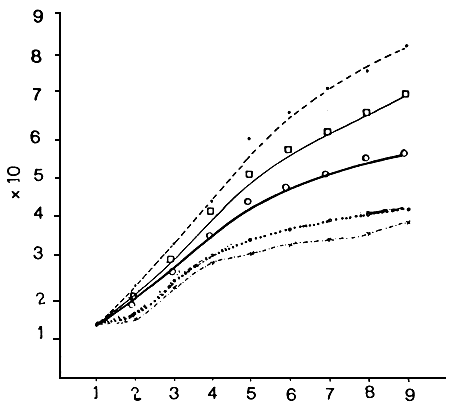
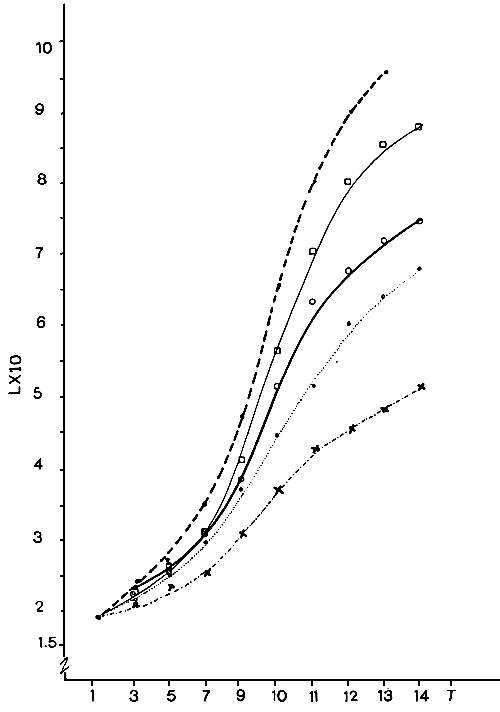
A. Lazzari & M. Di Bitetto
ITALY.
INTRODUCTION
In Aquaculture it is always of utmost importance to improve breeding techniques for species already framed, but also to look for other valuable species which may demonstrate remarkable resistance and hight growth rate. Until now, only few attempts have been made to farm large size marine species. Seriola dumerilli is the largest carangidea of the Mediterranean Sea and si nce 1985 has been farmed in concrete ponds in experimental conditions with the following procedure :
- collection of young fish (90–100gr) at sea
- Fattening experience in 30 cm concrete ponds at low densities.
As the graphic can show, we recorded a ponthly mean growth values of 105 grs with temperatue of 21–24°C and mean growth values of 58 grs in the other period, At the end of the first year of rearing the mean weight of fish were 1200 grs, with little mortalities and good adaptatilities to a simple diet. Due to difficulties to handle with high quantities of juveniles and the negative ecological implications of these operations the primary objective was to create a broodstok to conduct attempts on reproduction.
Little was known about sexual maturation stages, development of egg and larvae in Seriola sumerilii.
FISHING CAMPAIGN
The fishing campaign has been caried out using an operational base at the Pelagie Island, one of the most representative fishing areas for these species in Italy.
The most important equipment we had an board was a thermoregulated mobile unit for transporting eggs and sperms and equipped with a 600 micron filtering system and air. These unit has been confirmed to be very useful on board of fishing boats to recovery sexual products from a catch of fish.
During the reproduction period (may–july) of the Seriola dumerilii we had opportunity to handle the stages of gonad maturation in the femele together with eggs and sperms ready to fertilization.
In our conditions we observed fertilization in 60% of the eggs, with an oil drop of 0,3 mm. After 48 hours the 90% of the eggs were hatched at a water temperature of 19,8°C and 38 per thousand of salinity. After 45 hours, heart is visible pulsing, at 48 hours the 90 % of the larvae hatched with a density of 20 larvae/l.
Size of the larvae after 12 hours is 2,5 mm. and the yolk sea is 1,35 mm. Larvae of Seriola dumerilii are characterized for a wide pigmentation yellow and violet, of the body.
After four days the size of the larvae is 4 mm and the yolk sea is completely reabsorbed.
After the sixth day larvae are compact and the colour is yellowish with black, gradation, swimming and showing predatory preparation phases.
We have performed over 25 female gonads the histological screening in different stages of development and, according to Mayer and Shackley, (1988) we considered the size of oocytes, presence of lipidic and protein granulation, the number of nucleoli and the coalescence of the granulation in the yolk.
As a first stage we have the immature stage, characterized with a presence of primary oocytes and oogones organized in ovigerus fields.
The second stage is characterizes for the previtellogenesis.
At the third stage, vitellogenesis take place and a crown of lipids is around the nucleous.
At the fourth stage, oocytes come bigger in volume and proteic granulation in the cytoplasma are mixed with secondary lipidic drops.
As a fifth stage we observed the postvitellogenic oocy tes which can remain in this stage until meiosis take place again during ovulation phase.
The sixth stage represent the real egg, transparent and visible trough the gonad and in this stage take place the coalescence of lipids and proteic granulation.
CONCLUSION
The results on fertilization and observation of larval stages have never put on record before, and constitute a relevant base for next studies;
Fish campaign allow to increase the biological knowlege of the species, with is candidate for intensive aquaculture in the Mediterranean basin. The experience we have done on the species with concern the experimental farming, Giovanardi (1984). Lazzari (1989), the fish biology and reproduction studies must be insert in a Regional policy for the development of the marine valuable species.
By G. GEORGIOU & D. STEPAHNOU
CYPRUS.
1. INTRODUCTION
The family Siganidae consists of 27 species all over the world. In the Mediterranean the family is represented with two species, Siganus rivalatus and Siganus luridus known with the common english name as rabbit fish. Both are euryhaline and enrythermic. They migrated to the Mediterranean from the Red Sea through the Suez. canal (Ben-Tuvia 1964). They live on rocky mainly sea bed up to 20m depth for S. luridus and 40m for S. rivulatus, Both have adapted well mainly in the eastern, and southern Mediterranean up to the cost of Libya, In Cyprus the most popular of the two is S. rivulatus the“White rabbit fish” mainly because of the colour. Studies on the potential for commercial aquaculture production of Siganidae began inn the seventies, however, studies on their reproduction and larval rearing are limited.
2. REPRODUCTION AND LARVAL REARING
In the natural environment of the sea around Cyprus, and the eastern Mediterranean in general, rabbit fish spawn between June and September. Observations indicate that they spawn more than once in the summer months. Work on the reproduction and larval rearing of rabbit fish was reported by Popper et al.(1973), May et al (1974), Westernhagen and Rosenthal (1975) and (1976), Poper and Gundermann (1976), Poper et al (1976 and (1979), Lichatowich and Popper (1975), Gunderman et al (1983), Maneewong and Hazza (unpublished paper), Duray (1986), Ioilo (1986).
In Cyprus the reproduction of rabbit fish, S. rivulatus, was managed both naturally and in an induced method with the use HCG. The eggs are benthic, sticking to the tank bottom, They have a diameter of 600 μm. The larval length a hatching is 1.8±mm. Hatching takes place within 25–32 hours at the temperature of 24–26°C Larvae float on the water surphase and have a large relatively yolk sac. After day 2 they become more mobile. The mouth and digestive system is formed on day 3 and feeding starts at this stage. Various methods and diets were tried out for rabbit fish larval rearing, like rotifers of various sizes, bakers yeast, several species of phytoplankton or combinations of the above, however, without a positive result. The larval mortality starts on day five and by day six it reaches 100 % in all efforts, New trials using ciliates and other small size zooplankton, were started in 1990, and will be intensified in 1991 with the development of mass cultures of micro zooplankton.
3. FRY COLLECTION
In the summer of 1985 a survey which was carried out in the south and southeast coast of Cyprus showed that there were large stocks of fry of S. rivulatus which can be collected from the wild for mass culture under controlled conditions, In one area 10000 fry, 2–5 cm length, were collected within 2 hours using a beach seine net. The best time for fry collection is early in the morning at high tide. The transportation of fry is relatively easy mainly because the fry this of species is very hardy and can withstand various physicochemical parameters, Always during transportation sulfa drugs are used to prevent secondary infection from possible losses of scales of other injuries. Annual surveys, however, carried out after 1985 showed, that the fry supply from the wild is not so dependable and that reproduction and larval rearing is necessary for a programmed mass production of this herbivorous species in fishfarms.
4. NUTRITION AND GROWTH RATES
In the natural environment adult rabbit fish feed on seaweeds. Under controlled conditions they adapt quite easily to various diets like fresh vegetables (lettuce, clover), artificial dry diets, etc. Although the nutritional requirements of rabbit fish are not yet studied, it must emphasized that are primarily herbivorous species with low protein requirements of vegetable origin.
In Cyprus we have used fresh clover in order to fry out the suitability of this plan for the nutrition of rabbit fish. Two culture methods were employed for the experiment. a) Cages, b) a 300l aquarium using a closed water recirculation system. In the aquarium the fish increased their average weight from 1,94g to 7,96g and their average length from 5.9 cm to 8.5 cm, The temperature ranged from 22°C – 26°C. In the cages the average weight increased from 8.1g to 14.5g and the average length from 8.8cm to 10.9cm. The temperature ranged 18°C–22°C. In both cases the duration of the experiment was 60 days. the fish are only clover and mortalities were nil.
In the eastern Mediterranean S. rivalatus can reach 150g in one year (Ben-Tuvia et al 1973). In Saudi Arabia it was reported (Lichatowich et al 1984) that S. rivulatus fry under extensive cage culture conditions grew from 3g to 150g in five months. In Israel in six months, using cages, (Popper and Gundermann, 1975) it was reported that they reached 140g, In Cyprus also in cages but in polyculture with Sparus auratus and/or D. labrax they reached the commercial size of 180–200g, they do not grow much bigger, within 12 months, from collection form the wild at the size of 5g.
5. DISCUSSION
Rabbit fishes are species suitable, perhaps, perfect, for polyculture with other carnivorous species like seabream and seabass. They can provide a more rational utilization of all trophic levels of the ecosystem, In Cyprus they have been tried for cleaning the weed growth from plastic cage with excellent results. This herbivorous capacity of siganids can be utilised in all culture methods intensive, extensive and semi intensive for the biological elimination of seaweeds which can cause all kinds of problems if not controlled.
More work remains to be done on the larval rearing of Siganidae and particularly on the larval nutrition.
6. REFERENCES
BEN TUVIA, A., 1964, Two siganid fishes of Red Sea origin in the Eastern Mediterranean. Bull.
Sea Fish Res. sin., Haifa, 37: 1–10.
KISSIL, G.W., POPPER, D., 1973, Experiments in rearing rabbitfish (siganus rivulatus) in
sea water, Aquaculture, 1 359–364.
DURAY, N.M., 1986. Biological evaluation of three phytoplankton species (Chlorella sp. Tetraselmis sp, Isochrysis galbana) and two zooplankton species (Crassostrea Iredalei, Brachionus plicatilis) as food for the first - feeding Siganus guttatus larvae. The philippine Scientist 23 41–49.
GUNDERMANN, N., POPPER, D.M., LICHATOWICH, J., 1983. Biology and life cycle of Siganus vericulatus (Siganida Pisces) Pacific Science, Vol, 37 No 2.
LONO, T., 1986. effects of salinity of egg development and hatching in Siganus guttatus. The philippine scientist 23 31–40.
LICHATOWICH, T., POPPER, D., 1975. Report on the growth of rabbitfish in fish ponds in Fiji, Aquaculture, 5 211–212
LICHATOWICH, T., POPPER, D., THOBAITY, S., ARADA, M., BUKHARI, F., 1984. Grown of Siganus rivalatus reared in sea cages in the Red Sea. Aquaculture Vol. 40 no, 3 273–275.
LICHATOWICH, T., POPPER, D., Al-THOBAITY, S., ARADA, M., BUKHARI, F., 1984. The spawining cycle, fry appearance and mass collection techniques for fry of Siganus rivalatus in the Red sea. Aquaculture Vol. 40 No. 3 269–271.
MAY, R.C. POPPER, D., MCVEY, J.P.,, 1974, Rearing and larval development of Siganu canaliculatus (Park) (Pisces : Siganidae). Micronesica 10 285–298.
POPPER, D., GORDIN, H. KISSIL, G.W., 1973. Fertilization and hatching of rabbitfish Siganus rivulatus. Aquaculture, 2 37–44.
POPPER, D., GORDIN, H. KISSIL, G.W., GUNDERMANN, N., 1975. Some ecological and behavioural aspects of siganid populations in the Red Sea and Mediterranean coasts of Israel in relation to their suitability for aquaculture. Aquaculture, 6 127–141.
POPPER, D., GORDIN, H. KISSIL, G.W., GUNDERMANN, N., 1976 A successful spawning and hatching of Siganus vermiculatus under field conditions. Aquaculture, 7 291–292.
POPPER, D., GORDIN, H. KISSIL, G.W., MAY, R.C., LICHATOWICH, T., 1976. An experiment in rearing larval Siganus vermicultus (Valenciennes) and some observations on its spawning cycle. Aquaculture, 7 281–290.
POPPER, D., GORDIN, H. KISSIL, G.W., Pit, R., Zohar, U., 1979. Experiments on the propagation of Red Sea siganids and some notes on their reproduction in nature. Aquaculture, 16 177–181.
WESTERNHAGEN, N. VON, ROSENTHAL, H., 1975. Rearing and spawning siganids (Pisces : Teleostei) in a closes seawater system. Helgolander wiss. Meeresuters 247, 1–18.
WESTERNHAGEN, N. VON, ROSENTHAL, H., ROSENTHAL, H., 1976. Some aspects of the suitability of various Philippine siganid species (Siganidae) for mariculture. Aquaculture, 9 297–311.
BY G. GEORGIOU & D. STEPAHNOU
CYPRUS.
I INTRODUCTION
Puntazzo puntazzo is one of some twenty five species represented in the Mediterranean by the family Sparidae. In Cyprus almost all species of this family are highly esteemed, fetching comparatively high market prices. The catch of the Cyrpus fishery for this species is very limited and separate statistics are not kept. In the market they are classified in the same group with Diplodus sargus and D. vulgaris, as a matter of fact some cosumers do not distinguish between these species. They have same wholesale price (15.00) as Sparus auratus.
The immediate objective of this experimental culture is to study the different stages of the life cycle of P. puntazzo and examine its suitability ans potentials for aquaculture production. The long term objective is to have this species produced on a commercial scale by the fast developing private sector of marine aquaculture in Cyprus, in an effort to diversify the species presently in production, namely Sparus auratus and Dicentrarchus labrax.
BROODSTOCK
The broodstock was collected from the wild at the size of 50–100g and it was reared for a year and a half in floating cages before spawning. In the autumn of 1989 broodstock was transferred to the newly established Experimental Marine Aquaculture Station at Meneou of the Department of Fisheries, for spawning.
Spawning was natural. It started by the end of October and was completed two months later, by the end of December. It was observed that the spawning occured at about two to three o'clock in the afternoon. The brood stock behaved normally and gave good quality eggs. The water temperature during the spawning period ranged from 22°C in late October down to 18°C in late December.
Fig. 1 : SEAWATER TEMPERATURE AT MENEOU STATION
1989 – 1991
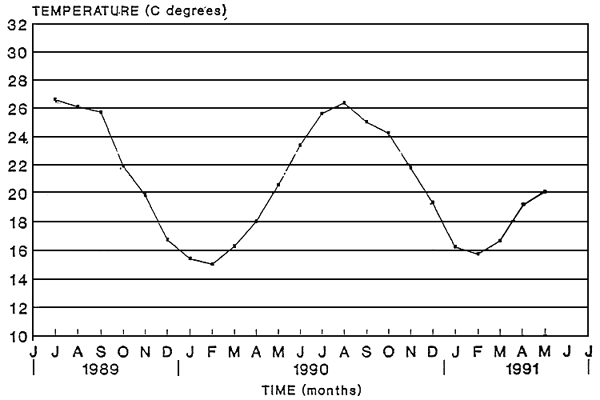
Fig. 2 : FEEDING SCHEDULE OF PUNTAZZO PUNTAZZO
1990 – 1991
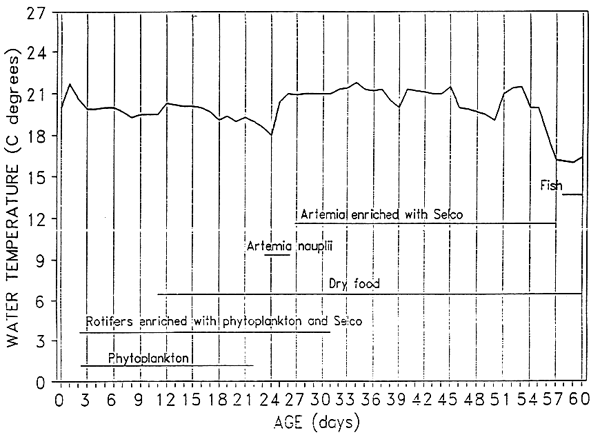
Fig. 3 : GROWTH OF PUNTAZZO PUNTAZZO LARVAE MENEOU STATION (1990 – 1991)

The same broostock, however, in 1990 had a completely different spawning behaviour. Spawning was natural but started in the middle of September. The broodstock gave a small quantity of eggs for 12 days and then they stopped spawning. A few days later the females began dying, one every few days, all of them full of overmature eggs. We belive that the commencement of the early spawning is due to a sudden drop of the temperature in the middle of September (from 26°C dropped down to 23°C) inducing the fish to start spawning. When the temperature went up to 26°C again, about a week later, the spawning was discontinued causing clogging and then death to the female broodstock. The ambient seawater temperature at the Experimental Marine Aquaculture Station at Meneou is shown in Fig. 1.
LARVAL REARING
Larval rearing was carried out in 3m3 cylindroconical fiber glass tanks, using similar methods and techniques as used for the rearing of S. auratus. Salinity was 39960 and temperature ranged between 20–23°C. The eggs, diameter 810μm, hatched within 30–48h from spawning larval sized at day 0 was 2.3± 1mm. Larvae were reared in green water until about day 20–22. The feeding regime is shown in fig.3. Mixed sized rotifers, enriched with chlorella and/or artificial enrichments, were used as the first diet for the larvae on day two or three depending on the temperature. Dry food in addition to enriched rotifers was given on day 14, at the length of 4.5mm, during the first trials with good results, and during later trials as early as day 11. Freshly hatched artemia nauplii were given on day 22–24 without discontinuing rotifers and dry food. After day 26 enriched metanauplii were given. From day 31 only food and enriched artemia metanauplii were given. Minced fish was given around day 57.
The larval growth of P. puntazzo is shown in fig.2.
Very high larval mortality occurred during the first days of rearing sometimes reaching 70% during the first seven days. To avoid this, efforts were made as far as possible to use small rotifers for the initial diet, which can be ingested by the fish larvae. The size of these rotifers was 55–100μm. Franicevic (1989) used rotifers with 80% of the population smaller than 150μm as first food, while Divanach and Kentouri (1982) mention that 3.1–3.9mm long P.puntazzo larvae ingest prey of about 145μm length. Between day 25–35 high mortality from over inflation of the swim bladder occured during the first trials of the project, sometimes reaching 100%. This problem occurred especially in trials when only artemia was given for a long time after nutrition with rotifers. In the trials when dry food was used after day 11 to 14, and artemia was given to the fish gradually and well enriched, symptoms of over inflation of the swim bladder did not occur. During the first trials it was observed that larval ponds which were placed in well illuminated areas of the hatchery had a significantly higher percentage of larvae with swim bladder as opposed to ponds at not so well illuminated areas. The light intensity over larval tnaks after day 4 ranged around 1000lux for about 12 hours. Usually the percentage of larvae with a swim bladder ranged between 80–90% in all larval rearing trials.
The final larval survival until day 60 ranged up to 11.6% of the initial larval number. Better survival results were obtained when fry was moved to nursery tanks (9m3) as day 45.
Fish fry is very sensitive to handling especially during gradings. They loose scales very easily resulting to mass mortalities. They need special care during grading, transferring of any other kind of handling. They should always be transferred with water, never using scoop nets, taking them out of water. After handling they must always be treated with sulfa drugs to avoid secondary infections from the loss of scales.
PREFATTENING - FATTENING
The growth rate during the prefattening stage, fig 4,5 was high and although the fattening stage is not yet over the growth rate is also expected to be high. P. puntazzo reached the average weight of 100g within 9months, 150g within one year and 214g, the last sampling, within 18months. The commercial size of about 330g is expected to be reached in July or August about 20 months from hatching. This growth rate.
Fig. 4 : GROWTH OF PUNTAZZO PUNTAZZO - MENEOU ST 1989–1991
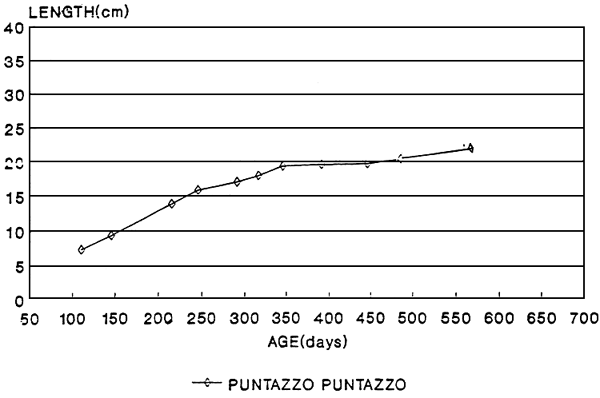
Fig. 5 : GROWTH OF PUNTAZZO PUNTAZZO - MENEOU ST 1989–1991
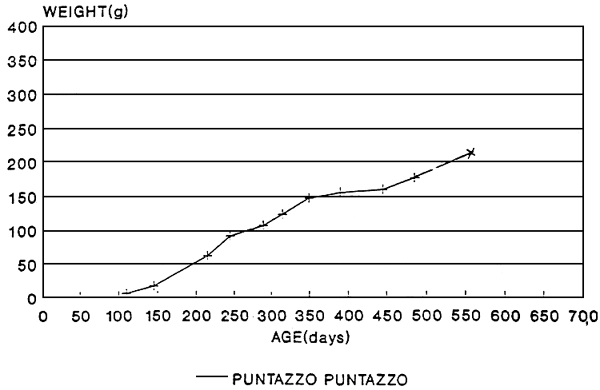
Compares very favourably with that of S. auratus, fig.6, which is reared simultaneously and under similar conditions in the Meneou Station, and its higher than that of D. labrax. Prefattening as well as fattening is carried out in fiber glass tanks, using the same commercial dry diets as for S. auratus.
DISCUSSION
The culture of P.puntazzo presents several advantages which could play an important role in its culture potentials:
The natural spawning time in the end of October - end of December is convenient since natural spawing in Cyprus for S. auratus is January – March and for D. labrax is February to March. It allows better utilization and physical as well as human resources of commercial hatcheries. Furthermore, the high ambient sea temperatures of this period allow better larval growth rates at a cheaper cost.
The growth rates at the prefattening and fattening stage is similar to that of S. auratus and better than that of D. labrax.
The culture behaviour of P. puntazzo presents several advantages in the sense that it adapts perfectly to pond culture.
Parameters like larval rearing, survival and nutrition need further experimentation, eventhough, similar biotechnology with that applied for S. auratus can also be applied for P. puntazzo. Especially as regards larval nutrition the development of methods for the mass culture of small size zooplankton in necessary.
The market potential of P. puntazzo still remains to be determined, and it will be the most decisive factor for its adoption by the private sector as a species for commercial production. A good demand and market price similar to other species presently in culture will be a requirement.
ACKNOWLEDGEMENTS
The authors would like to thank all the staff of the marine aquaculture section for their contribution and collaboration in the execution of this experimental culture.
Fig. 6 : GROWTH OF MARINE FISH AT MENEOU STATION 19989–1991

REFERENCE
Divanach P., Kentouri M., 1982. Utilisation des techniques extensives pour la production à grandeechelle d'alevins du sar Puntazzo puntazzo (Poisson, Telecost, Sparidae). Compt. Rend. Acad. Sci. Paris 294, Serie III : 1017–1019.
Franicevie V., 1989, Preliminarry results on the larviculture of Puntazzo puntazzo (Gmelin 1789) Pisces, Sparidae) p. 139–141. In : Aquaculture - A biotechnology in progress. N. De Pauw, E. Jaspers, H. Ackefors, N. Wilkins (Eds). European Aquaculture Society, Bredene, Balgium.
1st July, 1991
By G. GEORGIOU & D.STEPAHNOU
CYPRUS
INTRODUCTION
The Japanese red sea bream, Pagrus major or mada is a very highly esteemed fish in Japan. It is considered as “the king of marine fish”, and it is connected to Japanese tradition and legend. The Japanese consumers serve it on religious ceremonies and on festive occasions. It is appreciated for its bright pinkish color, its firm white meat as well as its delicate flavour. Its production, on and intensive scale in cages, has progressed very fast to reach the 25000t in 1984 from 15000t in 1980 and 5000t in 1975 (Doumenge 1986).
The red sea bream belongs to the family Sparidae. It is a carnivorous demersal fish. In Japan in the natural environment its spawning season is from March to May in Kyushu and from April to June in Seto Inland Sea (Ohno, 1983). Spawning takes place at the water temperature range of 15–22°C. It has a morphological resemblance to the gilthead bream Sparus auratus, which is farmed successfully in several Mediterranean countries. The introduction of the red sea bream in Italy (Lazzari et at. 1989) and in Yugoslavia (Lisac, 1989) indicates that its culture in the Mediterranean could have good potentials.
One day old larvae of the red sea bream were imported to Cyprus by the Department of Fisheries, from Yugoslavia in the beginning of May 1990, for experimental culture. The objective was to study the life cycle of the species and examine the culture and market potentials for its production on the commercial scale by the private sector.
LARVAL REARING
Early in May 1990, 300 000 one day old larvae of the red sea bream were imported from CENMAR, Fish Farming Ltd, Yugoslavia. The larvae arrived in good condition. Their rearing was carried out in three cylindroconical fiber glass tanks, 3m3 capacity each. Salinity was 39‰, water temperature was 90°C at the beginning of the larval rearing and gradually increased to 24°C at the end. Fig. 1 shows the ambient sea water temperature at the Meaneau Station. Water exchange was not carried out during the first five days. After day 5 a 5%/h water exchange was employed which was increased gradually upto 100%/h. In addition the tanks were cleaned regularly by siphoning bottom water. Light initially aeration, which was later uncreased, was also used in the larval tanks.
Fig. 1 : SEAWATER TEMPERATURE AT MENEOU STATION 1989–1991
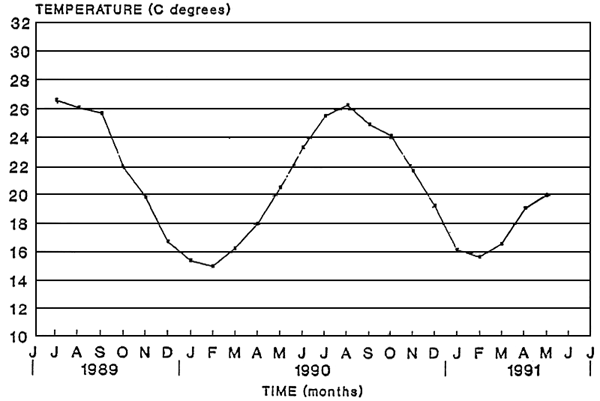
The feeding schedule emplyed is shown in fig.2. The “green water” technique was used from the beginning of the rearing until day 25, by adding daily in each tank some quantities of Chlorella culture (Smith and Hataya, 1982). Mixed rotifers, small and large strain, enriched with chlorella and/or artificial enrichments, with high HUFA content, were given to the larvae daily beginning from the first day of their arrival. Feeding with enriched rotifers continued until day 24, when freshly hatched artemia nauplii were used. On day 28 enriched metanauplii were used for fish larval nutrition and also dry food was given. From day 43 the larvae were feeding only on dry food and minced fish.
The highest mortality, occurred during the first five days of the rearing. After this, mortalities were very small, however around day 25 high losses were encountered from cannibalism. The small larvae were bitting each other resulting to mortalities. A relatively large percentage of juveniles presented deformity problems which became more obvious as the fish grew. These morphological problems are due mainly to the lake of the swim bladder.
PREFATTENING-FATTENING
Fiber glass of 9m3 and 40m3 capacity were for the prefattening and fattening respectively.
The growth of the red sea bream is shown in fig. 3, 4. It has reached the mean weight of 240g within thirteen months from hatching. The rearing of course will continue during 1991–92. Artificial dry diets are used for the nutrition and periodically this is supplemented with minced fish. The growth of the red sea bream in comparison to that of other species reared in the Meneou Station is shown in fig.5. The growth rate is higher than that of D. labrax, S. auratus and P. puntazzo. Generally the fish feed very actively and for lond periods before reaching satiation. As regards the behavior of the fish it seems that this species dose not adapt so well to tank rearing and especially small tanks. If reared in indoor tanks in nursery conditions or other areas where people disturb them they become very nervous, hitting the sides or jumping out of the tanks, resulting to injuries and mortalities. The transfer and grading of this species did not present any problems. Nets were used for their collection from the tanks. Then the fish were placed in large buckets, using scoop nets, and were transferred to the fattening tanks. In all cases sulfa drugs were used to avoid deaths from scale losses and other injuries.
Fig. 2 : FEEDING SCHEDULE OF PAGRUS MAJOR 1990 – 91
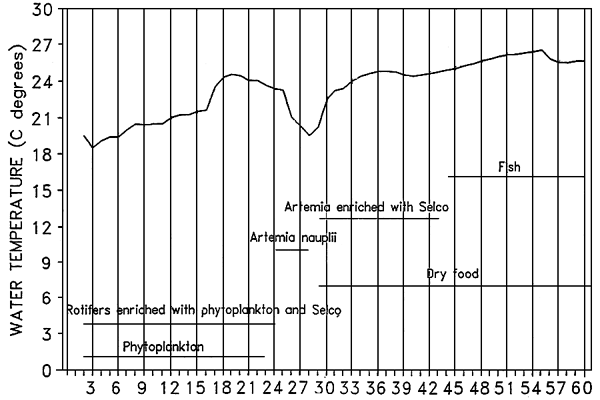
Fig. 3 : GROWTH OF PAGRUS MAJOR - MENEOU STATION 1989–1991

Fig. 4 : GROWTH OF PAGRUS MAJOR - MENEOU STATION 1989 – 1991
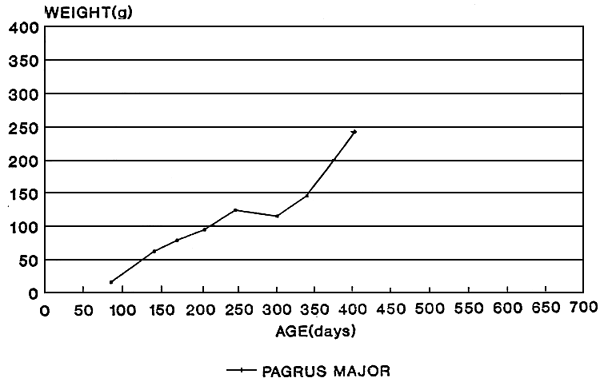
Fig. 5: GROWTH OF MARINE FISH AT MENEOU STATION 1989–1991

DISCUSSION
The high growth rate of the red sea bream is as very encouraging result as regards its culture potentials. The morphological resemblance of this species with Pagrus pagrus which has a very high esteem and demand among the consumers in Cyprus, fetching high prices, along with its good growth rate make it a species with excellent aquaculture potentials. Already the private sector is expressing its interest both in the consumers and the producers level for this particular species.
Its natural reproduction period in Cyprus is not yet known, however, it will most probably be in April–May which is a convenient time, for it will provide a better utilization of physical and human resources of commercial hatcheries.
The color of the fish will certainly play some postive role in its acceptability by the consumers.
Judging from the comments so far on its market potentials and the biological parameters known at this stage, this species presents excellent potentials for commercial culture in Cyprus.
ACKNOWLEDGEMENTS
The authors wish to thank all the staff of the Marine Aquaculture Section for their contribution and collaboration in carrying out this experimental culture.
REFERENCES
Doumenge F., 1986. l'aquaculture au Japan p. 930–933 In. Aquaculture Vol.2 Coordinator G. Barnabe Tecnique et Documentation (Lavoisier), Paris. Identification sheets for fishery purposes.
Lazzari A., Corbari L., Bzarbato F., 1989. The introduction of the Japanese red sea bream chryso phrys major into Italy: preliminary results p. 214 In: Aquaculture - A Biotechnology in progress. N.De Pauw, E.Jaspers, H.Ackefors, N.Wilkins (Eds). European Aquaculture Society, Bredene, Belgium.
Lizac D., 1989. Pilot production of red sea bream (Pagrus major) in Yugoslavia-present status p. 217–221. In : Aquaculture-A biotechnology in progress. N. De Pauw, E. Jaspers, H. Ackefors, N. Wilkins (Eds). European Aquaculture Society, Bredene, Belgium.
Ohno A., 1983. Red Sea Bream(Pagrus major). P.107–117. In Developments in aquaculture and fisheries science.Vol.11. Modern methods of aquaculture in Japan. Kafuku T. and H. Ikenoue (Eds) Elsevier, Tokyo.
Smith P.J., Hataya M., 1982. Larval rearing and reseeding of red sea bream (chrysophrys major) in Japan. Occasional publication NO.39. Fisheries Research Division. New Zealand Ministry of Agriculture and Fisheries, Wellington.
by Professor Carmelo Agius
MALTA
GENERAL INTRODUCTION
Malta is a importer of fish and fish products and with its substantial tourist industry and close proximity to European markets the marketing potential is enormous, Climatically it has the edge over most European countries in that the waters are relatively unpolluted and temperature profiles ranging from 15°C in January/February to 25°C in July/August. Thus year round fast growth can be achieved.
At the National Aquaculture Centre the species being cultured at present are seawater tilapia Orechromis spilurus, sea bass, breams, clams and Japanese oysters
TILAPIA
Fry Production
Tilapia fry are produced in a specially designed spawning pond which permits easy harvesting of the fry the same day they are released. The 8m diameter spawning pond is subjected to a 14hour light/10hour darkness daily regime and maintained at 26 to 27°C. The production from this pond can exceed 300 000 fry annually. The broodstock are changed after six to eight months of uninterrupted spawning.
NURSERY
The fry are collected, counted and transferred to the nursery where they are stocked at 7 500/m3 in shallow fibreglass troughs (capacity of each 0.53. These are served by recycled freshwater. Fry are fed a-methyl testosterone treated food for the first 20 days an then continued on normal feed for an additional three weeks. The nursery has a throughout capacity of 50 000 fry every 6 weeks i.e a total of 400 000 annually.
ACCLIMATATION
At six weeks they are transferred to be acclimated to salt water. The fish are stocked in 1.6m3 tanks at 1000 fish/m3 in freshwater. Seawater is then introduced at a rate such that the fish are in full strengh seawater (3.7%) in 48 hours. No mortalities are normally recorded during this transfer. The fish are then prefattened in these same tanks for 6 to 8 weeks when they attain a weight of 20 to 25 grams. The capacity of the acclimation unit is 25 000 fish per cycle i.e. 200 000 annually. Stocking densities of up to 70kgs/m3 are achieved in this system.
FATTENING
The 20 to 25 gram fish are then transferred for fattening.
Fattening is carried out in floating cages in Marsaxlokk bay and in 10m3 shore-based concrete tanks.
The combination of timely hormonal treatment (resulting from the possibility afforded by hatchery pond to harvest fry the same day they are released by the brooding fish) and sea water culture has resulted in complete elimination of precocious sexual maturation and in very fast uniform growth. The need for grading is miniral and 80 to 90% of the fingerlings acclimated to sea water reach 250 to 350g in 6 to 8 months from being acclimated to saltwater.
CONCLUSIONS
There is no doubt that is an excellent model that has considerable potential for commercial production. The cost of production of these fish is about half of what it is at present for seabass and breams and this could possibly offer the best alternative to the high value (and high production cost) species for the Mediterranean region. Two distinct disadvantages have however still to be overcome viz., their relatively high minimal temperature tolerance does not permit year round suvival in some regions and their consumer acceptibility is still uncertain. In our experience their taste compares very well with widely sought species of breams and other highly prized Mediterranean fish.
Mustapha TALBAOUI
MOROCCO
1- INTRODUCTION
Avant 1952, toutes les huitres vendues sur les marchés locaux marocains étaient importées du Portugal et de la France. Plus tard, des naissains ont été introduits d'Espagne (Crassostrea Angulata), du Sénégal (C.rhizophora) et du Japon (C. gigas) pour élévage dans les lagunes côtières notamment dans la lagune de Oualidia pour C.gigas qui a montré d'étonnantes performances de croissance (Beaubrun 1976).
Toutefois, l'Ostéiculture marocaine est restée limitée et traditionnelle. Aussi le gouvernement marocain par i'intermédiaire du Ministère des Pêches et des organismes publiques associés (O.N.P., I.S.P.M.) a engagé de nombreuses enquêtes afin de préciser les potentialités d'aquaculture de la zone littorale marocaine et en particulier celle de la MARCHICA ou lagune de NADOR. La FAO, par l'intermédiare du projet MEDRAP a participé à certaines de ces enquêtes.
Suite aux résultats prometteurs des prospections, études et enquêtes réalisées par les organismes suscités, il a décidé le lancement du premier projet pilote de développement de l'aquaculture au MAROC au niveau de la lagune de NADOR.
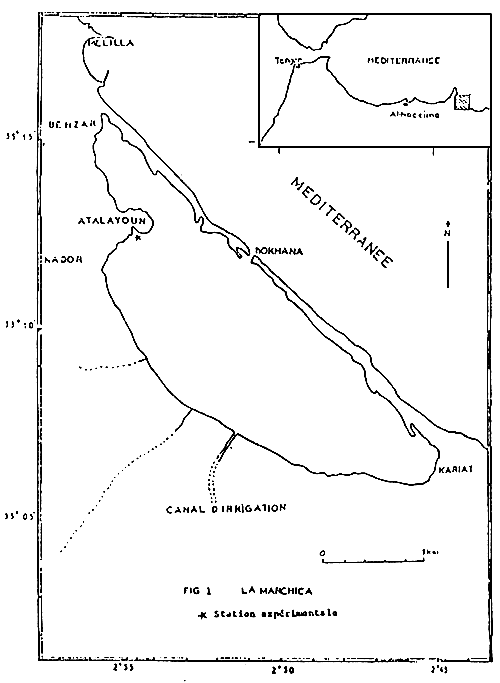
2- PRESENTATION DU SITE:
La lagune de NADOR (11500 ha) est située entre le Cap des trois fourches et le Cap de l'eau, sur le littoral Nord Est marocain. C'est un bassin allongé accidenté sur sa bordure continentale pas la colline d'Atalayoune. Sur toutes les marges, la profondeur augmente rapidement pour se stabiliser sur l'ensemble du bassin entre 6 et 7 m. Du côté mer, la MARCHICA est limitée par un cordon sableux partiellement consolidé. Aujourd'hui ce cordon est entaillé à peu près en son milieu par une passe ouverte en Mars 1981. Le corps de l'eau est très homogène physiquement et chimiquement sans stratification. Dans la lagune de NADOR, les masses d'eau issues du domaine marin, circulent essentiellement le long des rives, délimitant une masse d'eau centrale dont les caractéristiques sont beaucoup plus stables.
2.1. DESCRIPTION DU BATIMENT
Le plan des structures est donné d'une manière schématique dans fig1. Le bâtiment de l'écolserie abrite, en plus des structures propres à l'élevage des coquillages (Salle de conditionnement des géniteurs, salle d'élevage larvaire, unité de fixation et nurserie), un secteur de production d'algues mono spécifiques. II contient en outre, des salles de contrôle et un local à air muni d'un compresseur assurant (la diffusion d'air filtré à travers toutes l'écloserie. Un circuit de distribution de CO2 existe dans la section de production de phytoplanction et prend son origine dans le local…
Cette écloserie fonctionne 8 à 9 mois par an aussi bien pour les huitres que pour les palourdes : un cycle avancé s'étalent de Janvier à Avril et un cycle naturel de Mai à Septembre. Les deux espèces sont élevées dans les mêmes structures depuis les géniteurs jusqu'aux naissains de 2 mm et durant les mêmes période.
2.2. LES GENITEURS
Ils sont issus soit de la production de Marost, soit pêchés dans la lagune.
Conditionnement des géniteurs
II permit d'étaler la période de ponte qui est courte dans les conditions naturelles. Cette méthode consiste à introduire les géniteurs dans la salle d'acclimatation où ils sont placés dans des bacs de 1m3 de volume.
Par la suite, on fait augmenter la température jusqu'à ce qu'elle atteigne le niveau requis qui est de 22°C. Le système utilisé pour le conditionnement est le semi-fermé avec un renouvellement total toutes les 24 heures. Chaque bac de conditionnement est muni d'un système d'aération. La charge utilisée par est de 150 individus pour les huitres et 1000 individus pour les palourdes.
Un certain nombre de précautions sont prises avant toute introduction de géniteurs en écloserie :
- Lot à croissance rapide et aspect normal
- Un échantillon par lot est prélevé régulièrment pour examen au laboratoire et ce pour déterminer la qualité de la chair (I.C) des géniteurs, leur état de maturité sexuelle et leur état sanitaire.
- Une fois sélectionnés, les géniteurs sont épurés et soigneusement brossés.
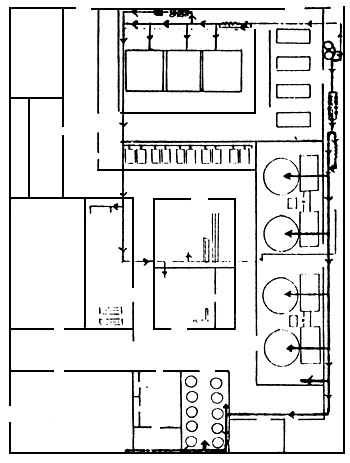
Fig.1 : Plan de l'écloserie
L'alimentation se fait sous forme d'algues unicellulaires apport quotidiennement en mélange polyspécifique composé de diatomés et flagellés. Les concentrations utilisées sont de l'order de 4 à 5 106 cellules/ml. Ces quantités peuvent être augmentées en fonction de la couleur de l'eau. La photopériode utilisées est de 13 h/jour.
Les premières pontes sont obtenues 1 mois après le début du conditionnement pour les huitres et 1,5 mois pour les palourdes.
Pontes :
La période de reproduction des huitres est étalée du mois de Février jusqu'au mois d'Aoôt. II suffit donc d'attendre l'émission des larves. Cette dernière, quand elle a lieu, peut être détectée par simple arrêt de l'aération pour voir flotter les larves véligères "D' à la surface de l'eau. Mesurant 130 à 150μ, elles sont récupérées sur tamis de 85μ de maille puis mises en élevage dans les bacs larvaires.
Chez les palourdes, la ponte est induite par choc thermique avec addition de sperme. Mais avant il faut s'assurer de la maturation des individus en ouvrant quelques animaux et en pratiquant des frottis de gonade.
Une fois maturés, le choc thermique subi par les palourdes consiste soit en une élévation de la température jusqu'à 28°C soit si la ponte n'est pas déclenchée, en une baisse de la température de 6 à 8°C. L'opération peut être répétée plusieurs fois si cela est nécessaire. Le processus peut aussi être activé en sacrifiant quelques palourdes en les écrasant de manière à faire couler les produits génitaux qui servent de stimulateurs aux autres animaux.
Les larves :
Chez les palourdes, après émission des gamètes, la fécondation se fait dans les deux à trois heures qui suivent dans le bac des géniteurs. Ces derniers sont retirés, et les oeufs fécondés sont transférés dans les bacs les bacs d'élevage (Volume = 20 m3 muni d'une lampe à) sodium, de résistances thermostatées et d'une aération continue) pour y passer les différents stades larvaires. Les larves Véligères “D” issues 2 jours après fa fécondation meurent 100–115 μ Quand aux larves d'huitres, elles sont mises dans ces bacs, immédiatement apprès leur émission à une densité de 0,5 larves / ml.
L'eau des bacs est renouvelée tous les 2 jours. Elle est donc vidangée sur un tamis de 85. On procède après cette opération à un tamissage successif, dans des tamis superposés de 150, 180, 200, 220, et 350. Les individus qui dépassent les 220μ peuvent être fixés, les autres sont remis dans lcur bac. Cependant, on vérific quand même à l'aide d'une loupe binoculaire, que les larves deslinées à la fixation, sont bien au stade prévélligère.
Les larves sont comptées chaque vidange du bac et c'est en fonction de l'effectif qu'on détermine la quantité de nourriture à donner. Pour 6 á 7M de larves, la quantité d'algues donnée est d'environ 60I d'un mélange formé de flagellés et surtout de diatomés. Rapportée an volume (ml) la concentration généralement utilisée est de 300 000μ cellules / ml.
Les espèces de diatomés utilisées :
- Chaetoceros gracilis
- Skeletonema costatum
- Chaetoceros calcitrans
Quand aux flagellés, les premiers stades larvaires sont nourris
- Isochrisis tahiti remplacée par la suite par
- Tetraselmis sp.
La fixation des larves
Les palourdes de 200μ n'ont qu'une fixation provisoire, elles se fixent pendant 4 jours sur la maille du tamis, alors que les jeunes huitres passent obligatoirement par une fixation sur un substrat dur. Pour cela, deux procédés sont utilisés; la fixation des jeunes huitres sur broyat de coquille (300μ) et la fixation sur “chapeaux chinois”. Dans le pemier procédé, le broyat coquillier est étalé sur un tamis de 85 (1m×0,15)m qu'on dépose dans la partie supérieure d'un bac rempli d'eau. Les larves sont ensuite versées par dessus et peuvent done se fixer sur les grains de coquilles. L'eau des bacs est renouvelée tout les jours. L'aération est continue. La ration alimentaire est de 20 I à 5 millions de cellules/ ml distribuée dans un bac contenant un million de larves à fixer.
En ce qui concerne l'autre procédé de fixation, les collecteurs de naissains d'huitres, dits chapeaux chinois sont montés sur un cadre qui peut contenir 352 pièces. La fixation a lieu dans un bassin de 40m3 dans lequel est déposé le cadre puis les larves, Ce système de fixation a été délaissé.
La nurserie
Au moment des vidanges des bassins de fixation, on procède à un tamissage sucessif à 500, 350 et 200. Le naissain retenu sur le tamis 500 est done prêt à passer en pré-nurserie.
Cette dernière se compose de race ways alimentés par un grand bassin (40m3) contenant la nourriture. Les animaux y demeurent jusqu'à la taille de I mm, ensuite ils sont transférés en nurserie jusqu'a leur transfert en mer, c'est à dire à une taille d'environ 2 mm atteinte après 45 jours pour les huitres et 60 jours pour les palourdes. Le système employè en nurserie est un système ouvert alimenté par de l'eau de mer pompée directement dans la lagune et dans laquelle est rajouté 5600 I d'un mélange d'algues/jour.
Cultures d'algues
La technique utilisée pour les cultures monospécifiques d'algues cellulaires repose sur le principe classique de l'augmentation progressive des volumes de culture. Dans notre cas nous avons :
- Souches de conservation en tubes à essai de 60 ml
- Souches de culture en Erlenmeyersde 250 ml, utilisé pour la multiplication alguale. après 7 jours de croissance, servent à inoculer des volumes supérieurs. Pas d'aération dans ce cas.
- Ballons de 201 I constituant l'étape intermédiaire et permetta l'inoculation de volume supérieur. L'inoculation des ballons de 20 I se fait par transvasement du contenu de l'Erlenmey. (5–15 jours).
- Bacs de 200 I inoculé chacun par un ballon de 20 I et sont utilisés après 5 à 6 jours de croissance pour le conditionnement des géniteurs et l'alimentation des larves et naissains.
Les espèces d'algues cultivées sont:
Diatomés :
- Chactoceros calcitrans
- Chactoceros gracilis
- Skeletonema costatum
Haptophycé:
- Isochrisis golbana (S. Tahiti)
- Monochrisis (PAVLOVA) Lutheri
Pasinophycés :
- Tetraselmis
Chlorophycées :
- Chlorella
3. CROISSANCE ET MORTALITE DES HUITRES DANS LA LAGUNE DE NADOR
3.1. Matériel méthodes
Analyse des facteurs du milieu :
L'expérience s'est déroulée dans une station située au pied la colline d'ATALAYOUNE II s'agit d'une zone de fond de sable-vaseau et de 6 à 7 m de profondeur. Au cours de cette étude (1989,1990,1991) ont été mesurées la température, la salinité et la teneur en Chlorophylle a de l'eau dans cette station. Seuls les échantillons de surface sont considérés. Pour chaque prélèvement, la température instantanée de l'eau a été mesurée au 1/10 de degrés au moyen d'un oxymètre numérique, la salinité a été mesurée au moyen d'un salinomètre. Les prélèvements d'eau (1,5 I) destinés au dosage de la teneur en Chlorophyle a sont filtrés sur filtre Watman GF/C à pore de 0,47 mm, l'extraction se fait selon la méthode préconisée par l'UNESCO (1966).
Expérimentation sur les huitres
1990 naissains d'huitres plates (Ostrea edulis) de 7,8 mm de taille ont été répartis en trois lots selon la densité :
| Lot 1 | : | 680 N/ casier de 2184 cm2 de surface |
| Lot 2 | : | 340 N/ casier de 2184 cm2 de surface |
| Lot 3 | : | 170 N/ casier de 2184 cm2 de surface |
Ces naissains ont été placés dans des casiers á cadre en ployester grillagé suspendus à environ 1,50 m de la surface de l'eau. Durant cette pemière période (45 jours d'élevage), tous les 15 jours, pour chaque casier, un échantillon de 40 individus est prèlevé de manière aléatoire. La longueur de chaque individu est mesurée au mm près à l'aide d'un pied à coulisse. Le poids vif est estimé à 0,01 g près à l'aide d'une balance Sartorius. Pour chaque lot, nous avons estimé la mortalité globale, Dans une seconde phase, toutes le huitres issues des casiers ont été mises en suspension en corbeille avec une densité de 100 jeunes huitres par corbeille. Deux dédoublements ont été opérés 4 mois d'élevage et le second 2 mois après le premier.
Tous les mois nous avons mesuré 120 individus et déterminé la mortalité globale.
Au 6ème mois d'élevage 480/967 huitres ont été collées sur corde selon deux techniques :
Le collage des huitres se fait en deux à deux sur corde de 7 m à l'ai du ciment CPJ 35. Ces huitres ont été détroquées 16 moise après le collage, dans chaque lot une trentaine d'individus a été prélevée, mesure pesée avoir estimé la mortalité golbale.

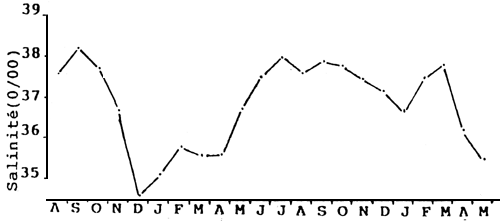
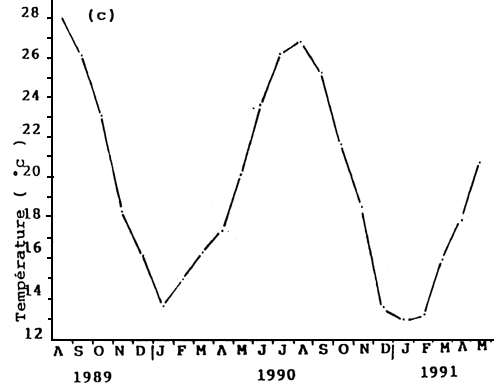
Fig. 2 : Evolution saisonnière des facteurs du milieu: (a) chloropylle a, (b) salinité, (c) température; au niveau de la station.
Mensuellement, 20 huitres de 60 à 120 g de poids sont prélevées pour détermination de l'état macroscopique des gonades ainsi due de l'indice de condition. Ce paramètre a été pour chaque huitre selon le formule:

oú P.S. est le poids sec de la chair d'huitre mise à 70°C à l'étuve pendant 24 heures, V.IV. le volume intervalaire= volume total de l'huitre-volume de la coquille.
3.2 RESULTATS ET DISCUSSION
Facteurs du milieu
La fig2 montre les fluctuations mensuelles de la temérature salinité el teneur en Chlorophylle a.
Les températures extrêmes relevées ont été 28,2°C en Août 1989 et 12,°C en Janvier 1991.
La salinité évolue saisonnièrement, les valeurs étant plus élevées en été (38 à 39‰) qu'en hiver (35 – 36‰). Ces variations sont liées essentiellement à la pluviométrie associée aux continentaux en eau douce.
Le cycle saisonnier de la teneur en Chlorophylle a dans la lagune de NADOR (station expérimentale) montre deux pies, un automne, et un en été àvec des concentrations intermédiaires plus faibles en hiver. La valeur maximale observée a été de 5,5 mg/3 3n octobre 1990 la valeur minimale (1,9 mg/m3) a été enregistrée pendant d'hiver au mois de Janvier 1990.
Croissance des huitres:
Les poids mensuels moyens sont représentés sur la fig3. où l'on peut suivre la croissance pondérale; pesant 0,3 g en début d'expérience ils atteingnent 15,1 g en fin Décembre 1989, 84,1 g en début Janvier 1991 et 127,5 g en Juin 1991. L'intervalle de confiance augmente au cours de la croissance.
A Nador, les naissains issus de l'écloserie en Août 1989 commencent à croître lentement de Septembre à Février, puis la croissance s'accélère de Mars à Juillet puis se ralentit même assez nettement d'Août à Octobre. Ce ralentissement semble être dû aux fortes températures.

Fig. 3: Croissance pondérale des huitres dans la lagune
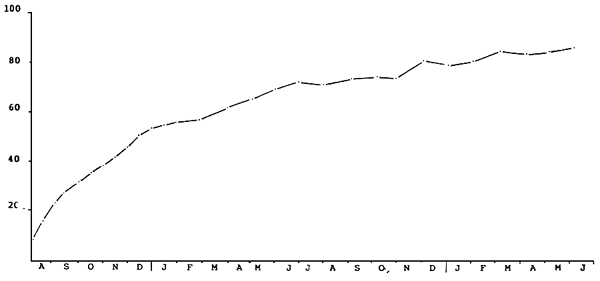
Fig. 4: Croissance linéaire des huites dans la lagune
Le ralentissement de la croissance constaté au mois de Mars est lié certainement à l'émission des gamètes.
L'évolution saisonnière de la croissance linéaire des huitres est représentée dans la figure 4; mesurant 7,8 mm en Aout 89, les naissains d'huitres augmentent très rapidement de taille pour atteindre en Janvier 90 56,5 mm puis la croissance se ralentit pendant la période hivernale pour reprendre au mois de Février. Elle se ralenti de nouveau voire même s'arrête à partir du mois de Juillet 1990.
La taille moyenne obtenue en Mai 91 est de 86,5 mm.
Selon CORRINGA (in Adreu; ARTE, 1954), la croissance linéaire d'Ostréa edulis a lieu périodiquement. Il met de ce fait en cause le résultats obtenus par SERBERTIS (in Adreu, ARTE, 1954) qui observe une croissance continue de cette espèce en Grèce.
Les fluctuations mensuelles de l'indice de condition des huitres représentées dans la fig.5 montrent deux pies en mars (168) et un en Décembre (115). La valeur minimale (14) a été enregistrée au mois de Septembre.
Ces variations semblent être liées essentiellement à la gamétogenèse
Elle commence en Octobre–Novembre avec une ponte partielle en Mars puis complète en Mai–Juin.
La chute de l'I.C. notée entre Juillet et Septembre est probablement dûe aux fortes températures estivales aggravées par le manque de nourriture dans le milieu naturel pendant cette période.
Mortalité des huitres:
Les taux de mortalité mensuel sont reportés sur la fig.6 La mortalité affecte principalement le naissain 15 jours aprés l'immersion avec un taux de 15,6%, puis montre une augmentation progressive durant l'été pour culminer en October. Le taux de mortalité enregistré pendant la phase de prégrossissement c'est à dire après les 6 premiers mois d'élevage est de l'ordre de 18, 7%. Il est de 41,1% en phase de grossissement qui a duré 17 mois dans le cas de l'expérience.
La mortalité des huitres dans la lagune de Nador semble être liée à la période de forte température selon GLAUS (1981) la mortalité des huitres (Ostrea edulis) est maximale pendant le mois le plus chaud de l'année. La mortalité saisonnière élevée des grands individus pendant le mois d'Octobre pourrait être expliquée par la fatigue dûe à l'intense activité gonadiques des mois précédents et par des conditions défavorables (température élevée et nourriture très limitée).
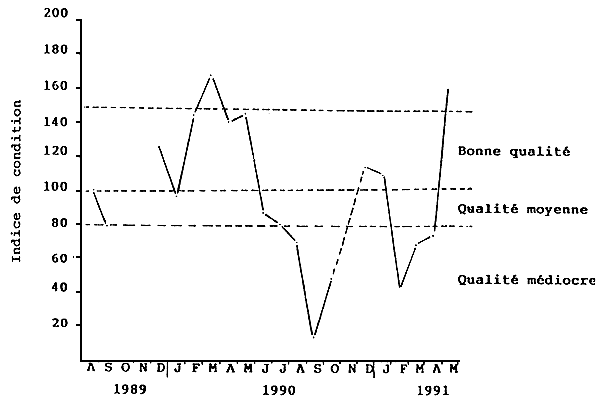
Fig. 5: Indice de condition: Evolution saisonnière
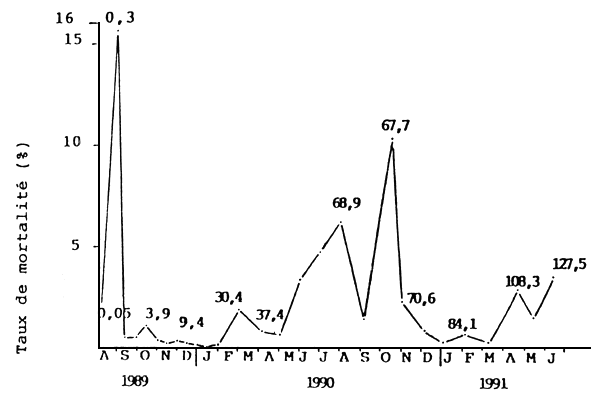
Fig. 6: Taux de motalité des huitres: Evolution saisonnière Les nombres indiquent l'évolution du poids vif moyen.
| Casier «A» (d = 680 N / 2184 cm2) | ||||||||
| Date | Poids(g) | Longueur (mm) | Pertes | Effectif | ||||
| x | ±IC | CV | x | IC | CV | |||
| 01/08/89 mise en él. | 0.054 | 0,006 | 57,2 | 7,8 | 0,3 | 20,3 | - | 680 |
| 15/08/89 | 0,30 | 0,04 | 46,4 | 15,5 | 1 | 20,7 | - | - |
| 30/08/89 | 0,74 | 0,08 | 35 | 23,3 | 1,1 | 15 | 101 | 579 |
| 13/09/89 | 1,16 | 0,12 | 32,5 | 27,6 | 1,04 | 11,9 | 2 | 577 |
| Casier «B»(d = 340 N / 2184 cm2) | ||||||||
| Date | Poids(g) | Longueur (mm) | Pertes | Effectif | ||||
| x | ±IC | CV | x | IC | CV | |||
| 01/08/89 mise en él. | 0,054 | 0,006 | 57,2 | 7,8 | 0,3 | 20,3 | - | 340 |
| 15/08/89 | 0,32 | 0,04 | 35,5 | 16,0 | 0,9 | 17,2 | - | - |
| 30/08/89 | 0,69 | 0,07 | 31 | 21,3 | 0,8 | 12 | 59 | 281 |
| 13/08/89 | 1,08 | 0,11 | 32,9 | 26,3 | 1,1 | 13,7 | 4 | 277 |
| Casier «C» (d=170 N/2184 cm2) | ||||||||
| Date | Poids(g) | Longueur (mm) | Pertes | Effectif | ||||
| x | ±IC | CV | x | IC | CV | |||
| 01/08/89 mise en él. | 0,054 | 0,006 | 57,2 | 7,8 | 0,3 | 20,3 | - | 170 |
| 15/08/89 | 0,31 | 0,04 | 37,4 | 14,4 | 0,3 | 19,5 | - | - |
| 30/08/89 | 0,76 | 0,11 | 46,7 | 21,3 | 1,1 | 16,,9 | 26 | 144 |
| 13/09/89 | 1,13 | 0,13 | 36,6 | 25 | 1,1 | 14,4 | 0 | 144 |
Tableau 1: Croissance et survie du naissain d'huitre plate en fonction de la densité
| Huitres en suspension en corbeilles | Huitres collées sur corde | |||
| vers le haut | vers le bas | |||
| Poids | X | 127,5 | 73,1 | 67,6 |
| ± I.C.(g) | 6,5 | 5,7 | 5,2 | |
| C.V | 28 | 21,4 | 20,8 | |
| Longeur | x (mm) | 865 | 67,5 | 66,1 |
| ± I.C. | 1,7 | 2,0 | 2,1 | |
| C.V.(g) | 10,4 | 8,2 | 8,6 | |
| Indice de condition | x | 131,5 | 163,7 | 153,9 |
| ± I.C. | 34,7 | 29,2 | 26,2 | |
| C.V | 59 | 48,8 | 46,6 | |
| Taux de service (g) | 58,9 | 51,6 | 42,6 | |
Tableau 2: Influence du mode de grossissement sur la taille, le poids, l'indice de condition et le taux du survie après 17 mois d'élevage
Influence de la densité sur la croissance et survie des naissains au cours du premier mois d'élevage:
La croissance et survie des naissains au cours du premier mois e'élevage ne semble pas être affecté par les densités testées dans l'expérimentation (680 N/2184 cm2, 340 N/2184 cm2. Ces densités ont été choisies en fonction de celles utilisées en élevage et seraient suffisamment faible pour détecter des différences significatives.
Influence du mode de grossissement sur la croissance et sur des buitres:
Les valeurs obtenues du poids et de la taille après 17 mois d'élevage et de la survie sont plus élevées chez les huitres élevées en suspension en corbeilles que chez les huitres collées sur cords. L'indice de condition est par contre plus bas chez les premières que chez les secondes.
D'autre part les valeurs obtenues du poids de la taille, de l'indice de condition el de la survie sont légèrement plus élevées chez les huitres collées le haut que celles collées vers le bas.
3.3 CONCLUSION
La lagune de Nador offre des condition hydrologiques et biologiques très favorables pour une exploitation importante de l'huitre plate (Ostrea edulis). L'approvisionnement en naissains se fait en majeur partie à partir de l'écloserie. La principale contrainte pour le développement de cette activité réside dans la commercialisation, des démarches sont entreprises auprès des autorités sanitaires Françaises pour essayer d'obtenir un accord autorisant l'introduction de nos huitres sur le marché Français.
Le suivi réalisé entre les mois d'Août 89 et Juin 91 montre que la croissance des huitres est contiune avec des phases de ralentissement et des phases d'accélération. Cette succession est en relation avec la reproduction et la température.
L'indice de coondition des huitres montre des variations saisonnière en relation directe avec la gamétogenése et la ponte. Les valeurs trés basses de ce paramètre enregistrée entre Juillet et Septembre sont liées au stress causé par les fortes températures et an manque de nourriture. Cette chute explique d'ailleurs le ralentissement voire même l'arrêt de la croissance pendant cette période.
Les taux de mortalité des huitres sont de l'ordre de 18,7% en phase prégrossissement et de 41,1% en phase grossissement. Ces mortalité affectant principalement les naissains pendant les 15 jours premiers jours d'élevage et les huitres pendant l'été l'automne.
L'étude comparative des deux modes d'élevage montre que les huitres élevées en corbeilles ont une croissance et survie supérieures et un indice de condition plus faible par rapport à celles collées sur cordes.